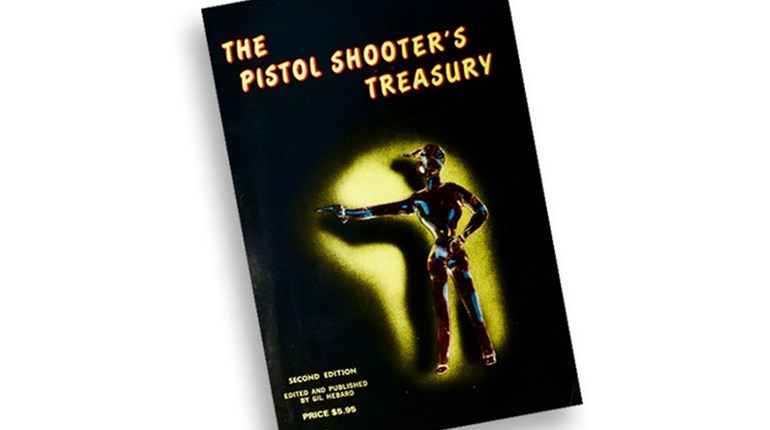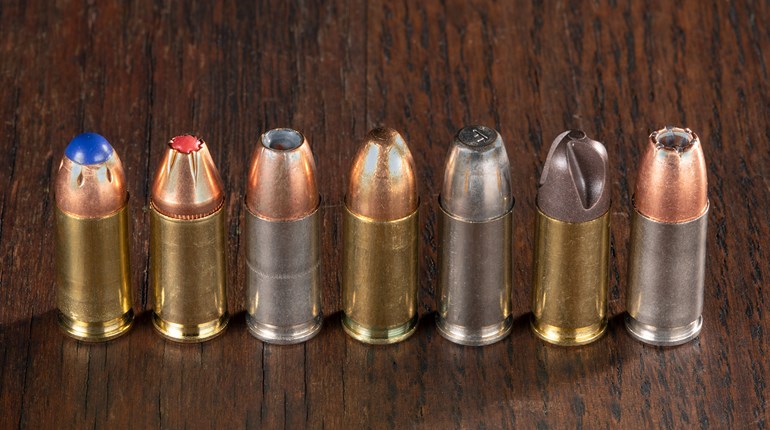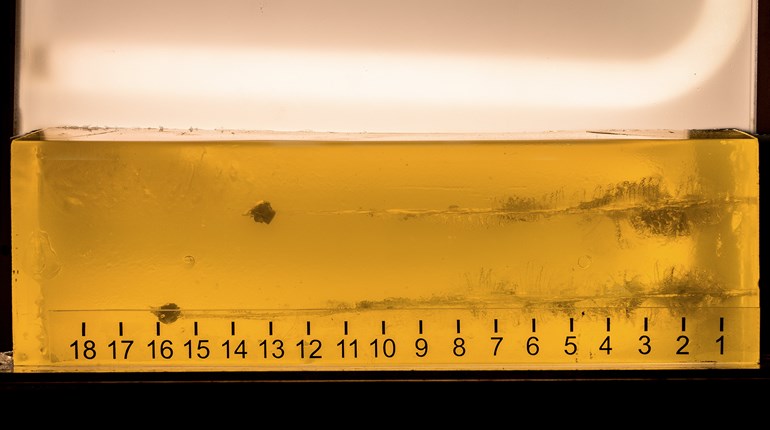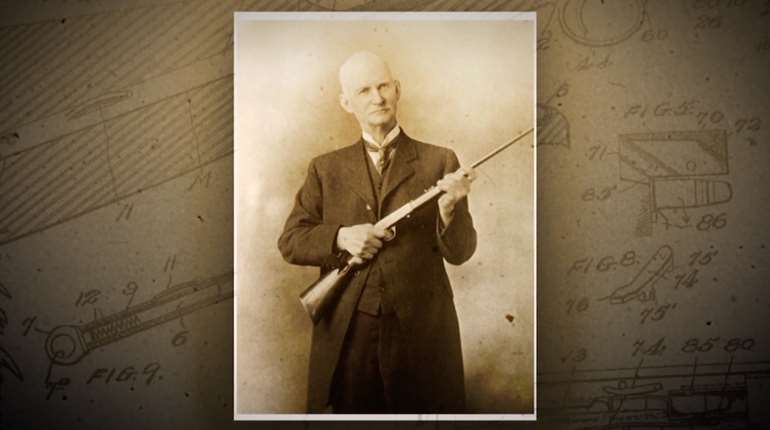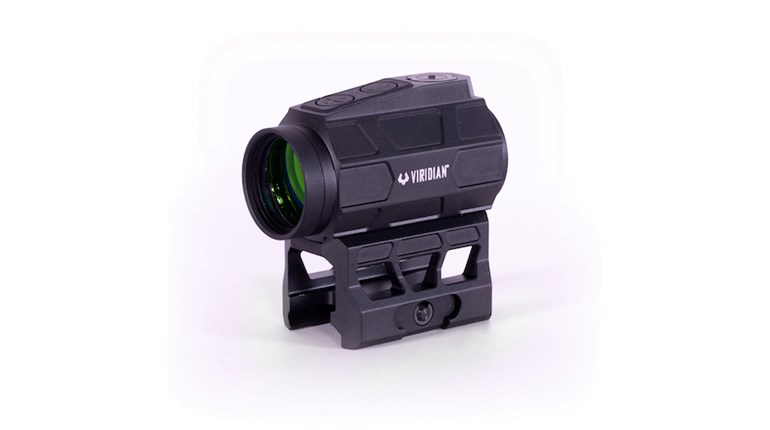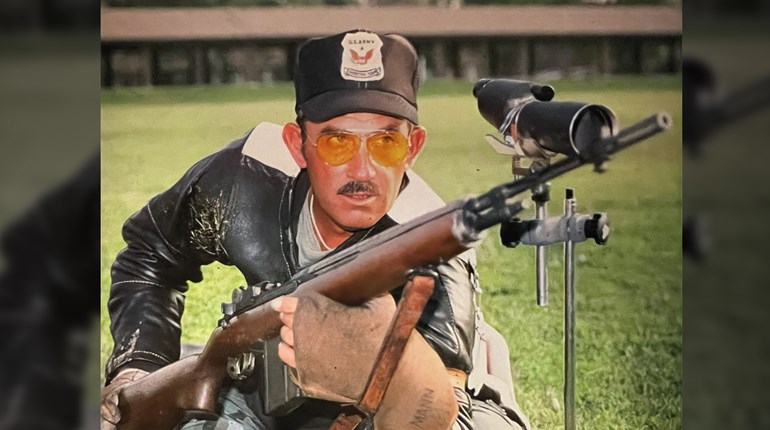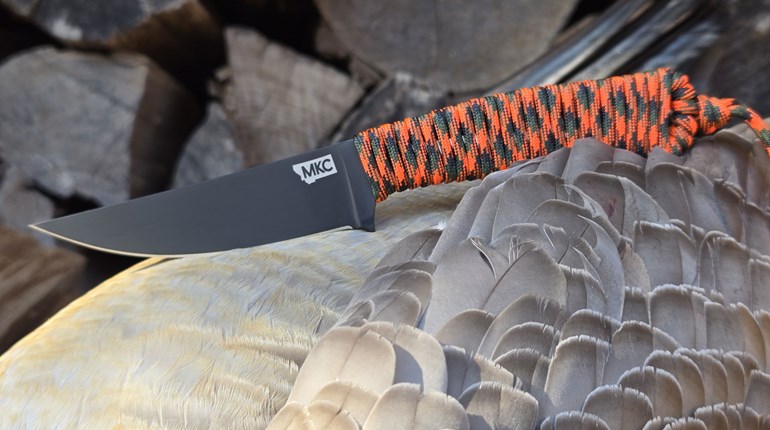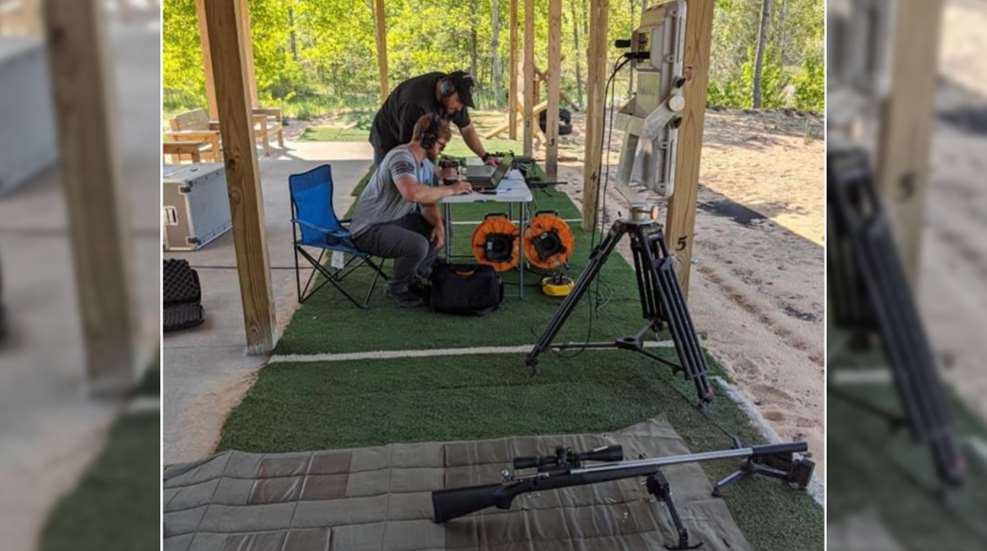
We often talk about Applied Ballistics here at Shooting Sports USA. That's for a good reason—founder Bryan Litz and company have developed a self-described "ecosystem of products" on the cutting edge, encompassing books, software, training and more. What's more is the company shares informative articles on its website about internal, external and terminal ballistics that can be helpful to competitive shooters.
Below is an article penned by Litz about shot-to-shot variation in Muzzle Velocity and Ballistic Coefficient.
Shot-to-Shot Variation in Muzzle Velocity and Ballistic Coefficient
By Bryan Litz
Most long-range shooters are aware that they have variation in Muzzle Velocity (MV) around the average. This can be measured with a chronograph, and the goal is to minimize the variation so your shot group doesn’t grow too tall at long range (fast shots hit higher than slow shots). The data in Figure 1 is an example of how your vertical dispersion will grow at long range for three different levels of Standard Deviation (SD) in MV.[1]
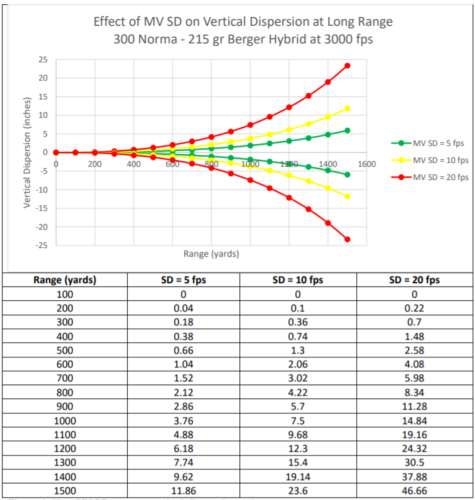
Muzzle Velocity causing vertical dispersion at long range is common knowledge, but what about BC variation from shot-to-shot? Most shooters don’t have the means to measure the BC of each shot, and don’t know what the SD of the BC is for their ammunition.
Using Doppler radar, it’s possible to measure the BC of each individual shot, and determine the SD of the BC, as well as the vertical dispersion that results at long range. See the data in Figure 2 below.
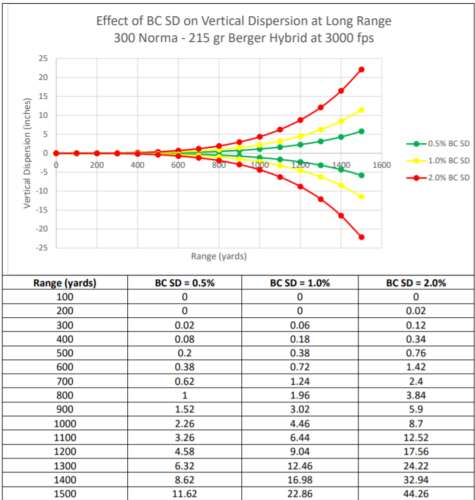
We can make a couple of observations about this data:
- MV SD causes more vertical dispersion beginning at shorter range, whereas the effect of BC variation isn’t much of a factor until longer range, but then grows more rapidly.
- A MV SD of 5 fps has a comparable effect on vertical dispersion as 0.5 percent SD in BC.
- A MV SD of 10 fps has a comparable effect on vertical dispersion as 1.0 percent SD in BC.
- A MV SD of 20 fps has a comparable effect on vertical dispersion as 2.0 percent SD in BC.
After many Doppler radar tests, we’ve found that BC SDs can be in the 0.4-0.6 percent range for very high-quality bullets, bullets that have been pointed, and/or meplat trimmed for uniformity. Typical bullets have BC SDs around 0.8-1.2 percent. On occasion, some bullets exhibit excessively high BC SDs in the range of 1.5-2.0 percent or more. These are typically the very long bullets, or ones with stability issues.
In Figure 3, the radar data output shows how the BC can be different on every shot. For this particular group, the MV SD is 5 fps, which is very good. The SD in BC is measured to be 0.00111. This equates to: 0.00111/0.368 = 0.3 percent, which is also very good. In fact, the Berger 0.308-cal. 215-grain hybrid bullets were pointed in this test, which increases the average BC, as well as the consistency of the BC. This is highly consistent ammunition that will certainly minimize vertical dispersion at long range.
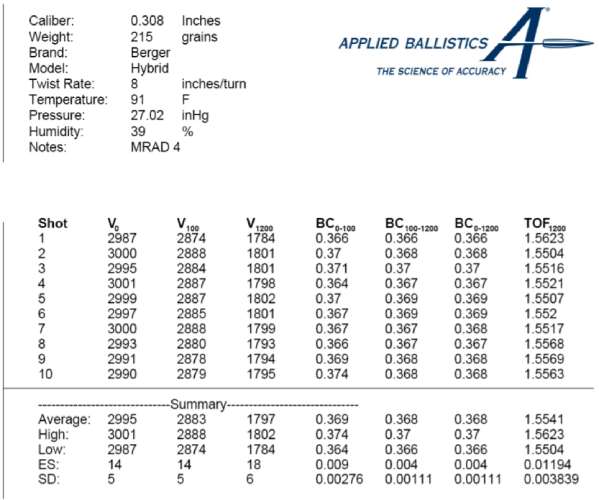
Thanks to Applied Ballistics, LLC for allowing us to share this article. Learn more at appliedballisticsllc.com.
[1] Standard Deviation (SD) and Extreme Spread (ES) are related as follows: 95 percent of shots will be within +/-2 Standard Deviations of the average. For example, if the average MV is 3,000 fps, and the SD is 10 fps, 95 percent of shots (that’s 19 out of 20) will be between 2,980 fps and 3,020 fps, and ES of 40 fps. In other words, ES is typically four times the SD for a 20-shot group.
See more: How The Kestrel Became The iPhone Of Weather Meters













